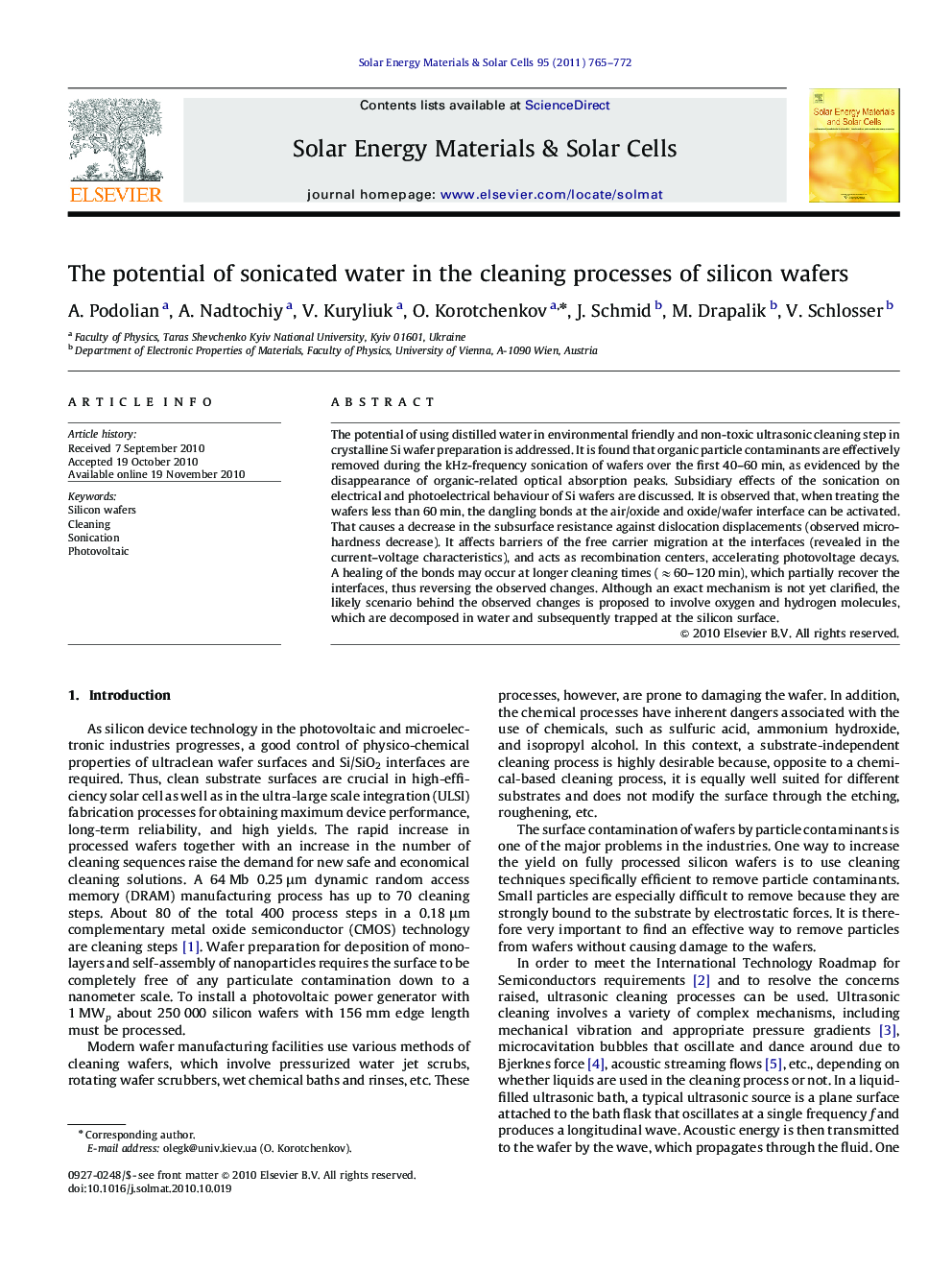| Article ID | Journal | Published Year | Pages | File Type |
|---|---|---|---|---|
| 79255 | Solar Energy Materials and Solar Cells | 2011 | 8 Pages |
The potential of using distilled water in environmental friendly and non-toxic ultrasonic cleaning step in crystalline Si wafer preparation is addressed. It is found that organic particle contaminants are effectively removed during the kHz-frequency sonication of wafers over the first 40–60 min, as evidenced by the disappearance of organic-related optical absorption peaks. Subsidiary effects of the sonication on electrical and photoelectrical behaviour of Si wafers are discussed. It is observed that, when treating the wafers less than 60 min, the dangling bonds at the air/oxide and oxide/wafer interface can be activated. That causes a decrease in the subsurface resistance against dislocation displacements (observed micro-hardness decrease). It affects barriers of the free carrier migration at the interfaces (revealed in the current–voltage characteristics), and acts as recombination centers, accelerating photovoltage decays. A healing of the bonds may occur at longer cleaning times (≈60–120 min), which partially recover the interfaces, thus reversing the observed changes. Although an exact mechanism is not yet clarified, the likely scenario behind the observed changes is proposed to involve oxygen and hydrogen molecules, which are decomposed in water and subsequently trapped at the silicon surface.
